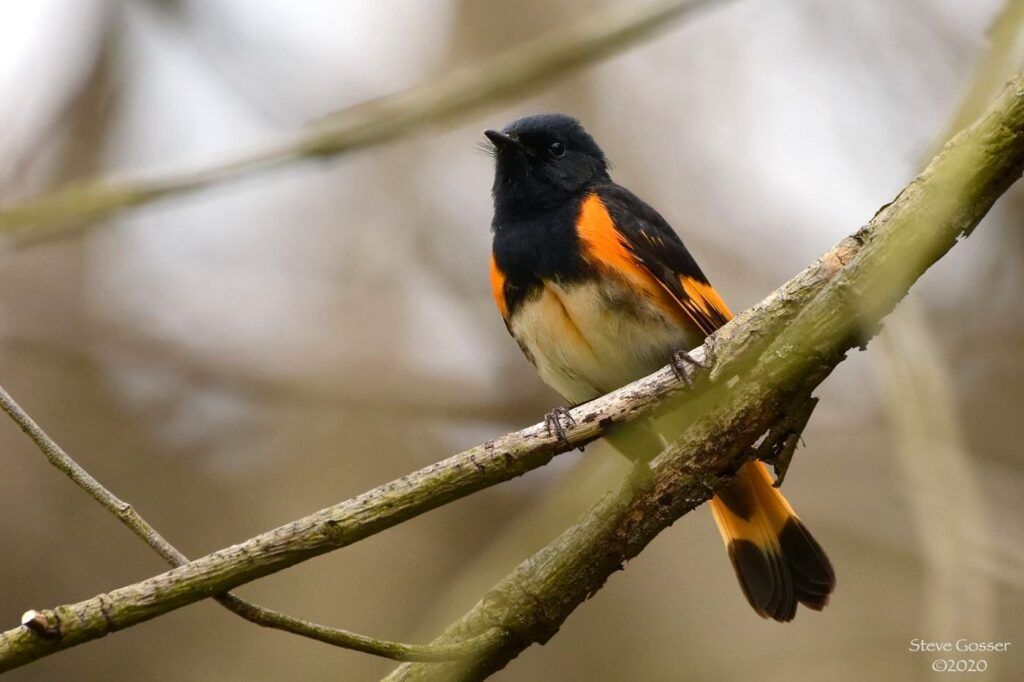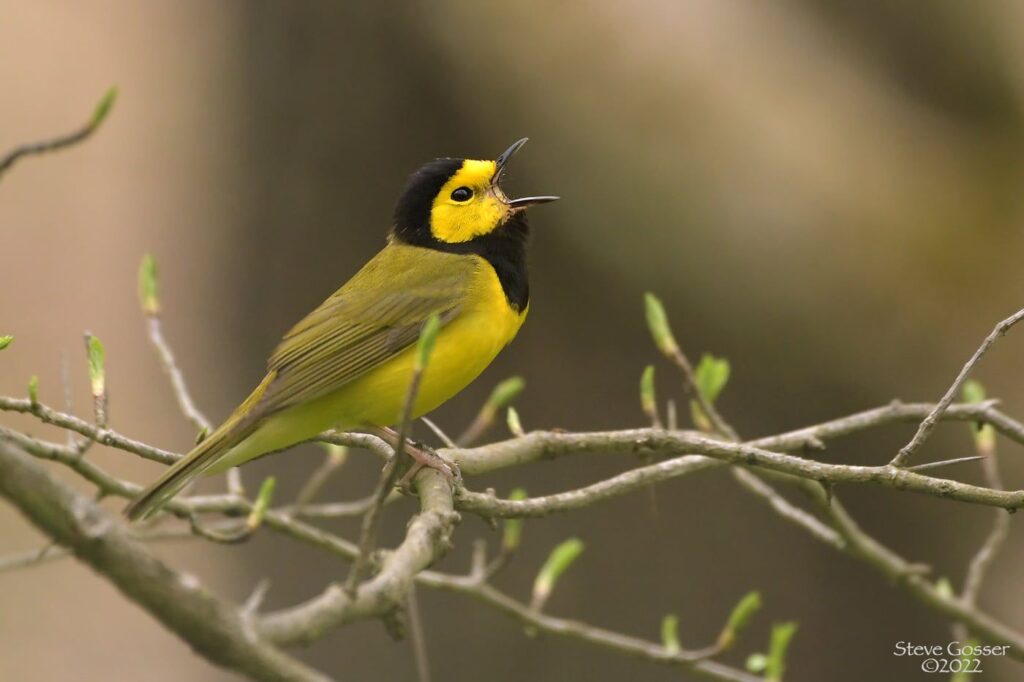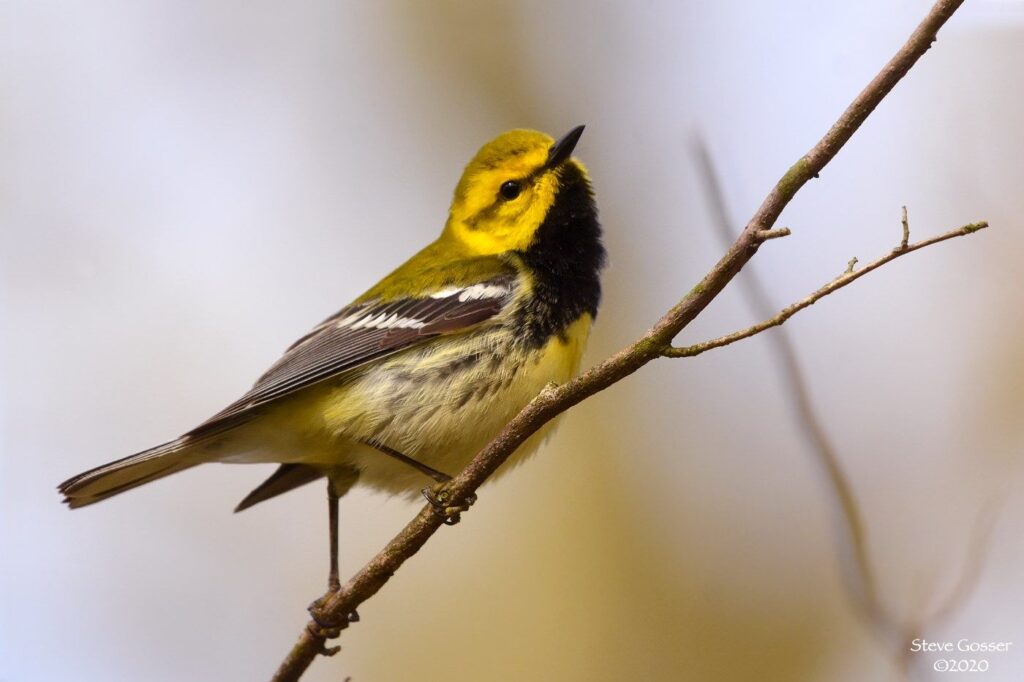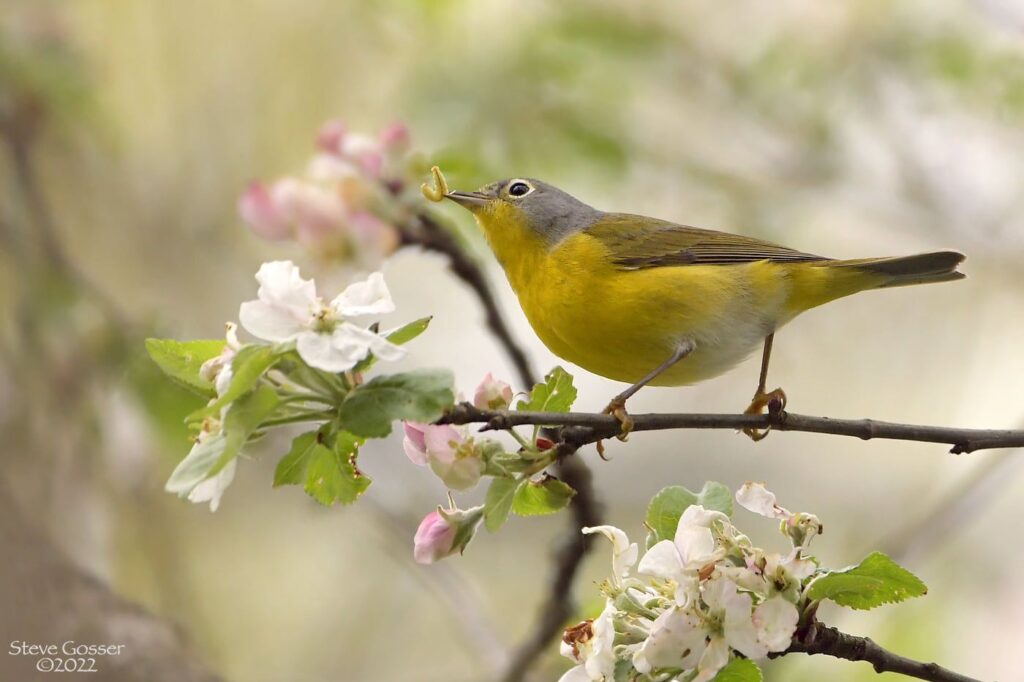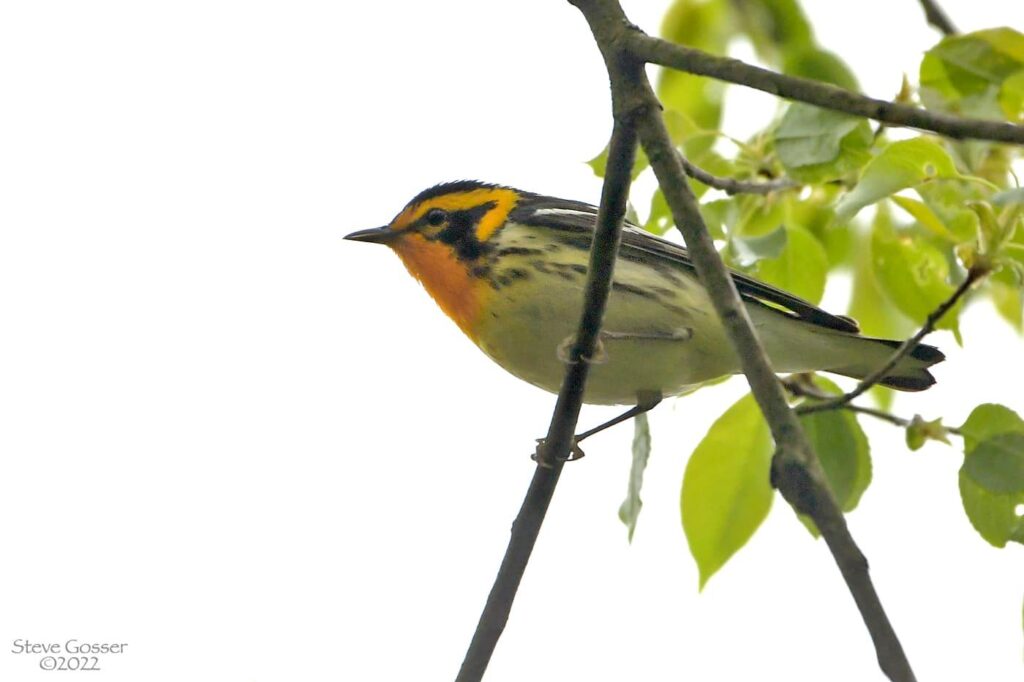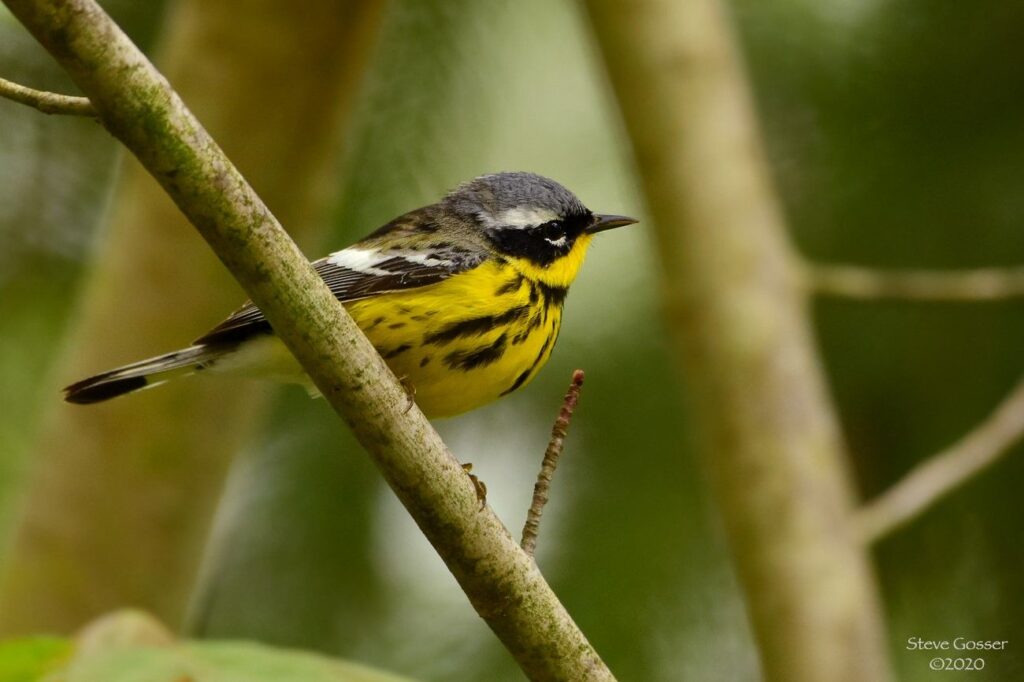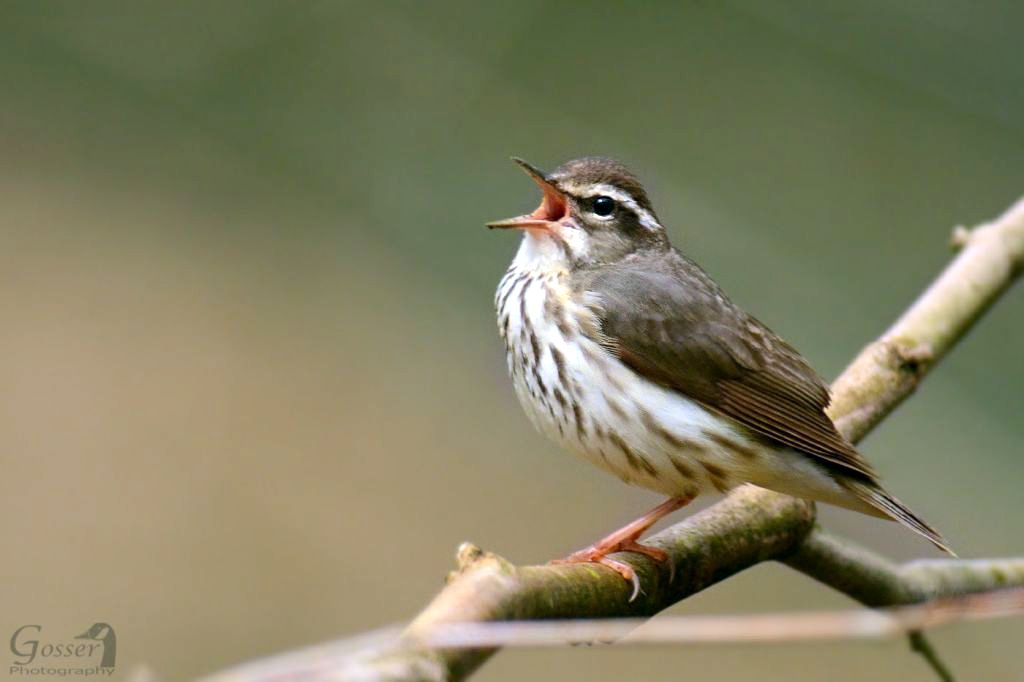
21 April 2024
Black Swamp Bird Observatory (BSBO) at Magee Marsh Wildlife Area in Ohio has been banding birds for more than three decades. When they analyzed their warbler data since 1992, the arrivals and departures fell into three distinct waves with the same species in those waves year after year.
This led to their Spring Migration Wave Theory, illustrated on BSBO’s website. I have embedded their graphic and made it tiny on purpose so that you will click on the image to see all the details in the original.
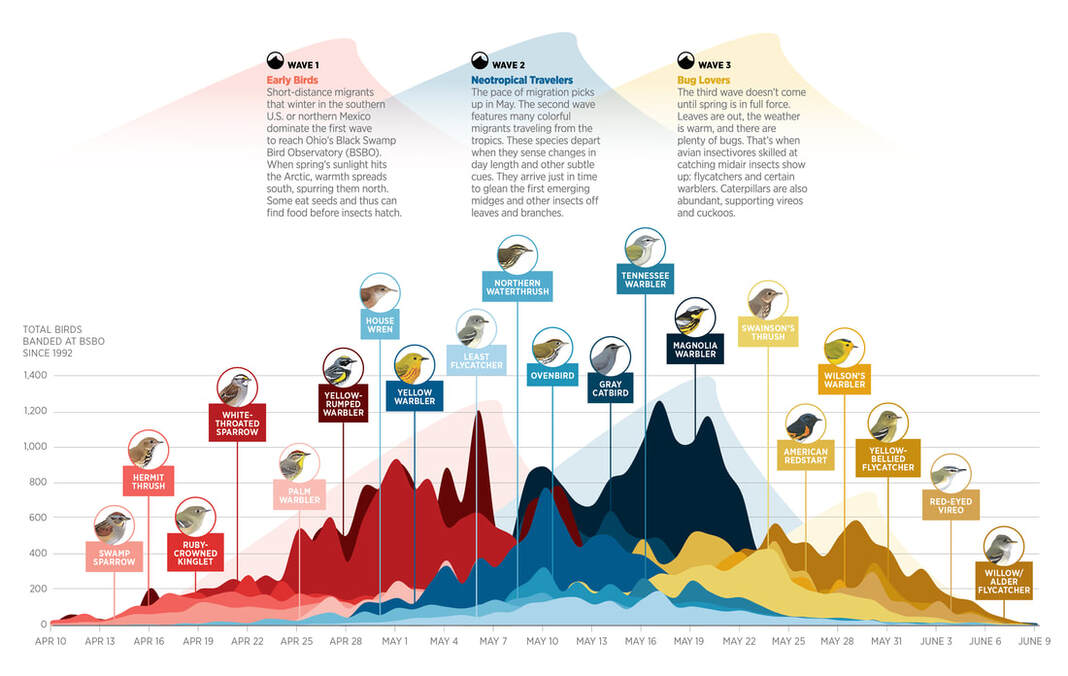
BSBO describes the waves and their timing in northwestern Ohio. These timings don’t always apply to Pittsburgh. We are between the Mississippi and Atlantic Flyways, so birds often get here last.
The first wave dominated by male White-throated Sparrow, Hermit Thrush, male Myrtle Warbler, and male Ruby-crowned Kinglet occurs around 25 April [in Northwestern Ohio]. Sub-dominant warblers include the Black-throated Green, Black-and-white, and Nashville. …
The second wave, known as the big wave, occurs 7-13 May [in Northwestern Ohio] and is represented by the greatest species diversity of the spring … The second pulse of this wave coming five to seven days after, usually has the largest volume. …
The third wave normally comes around Memorial Day weekend [in Northwestern Ohio] and is dominated by female Magnolia Warbler, American Redstart, Mourning Warbler, vireos, and flycatchers.
— Black SwamP Bird Observatory: Spring Migration Wave Theory (boldface added)
Which species are in each wave?
In Pittsburgh the First Wave contains species we’ve already seen this month: Louisiana waterthrush, white-throated and fox sparrows, dark-eyed juncos, hermit thrushes, male yellow-rumped (myrtle) warblers, male ruby-crowned kinglets and now, at the end of April, palm warblers.
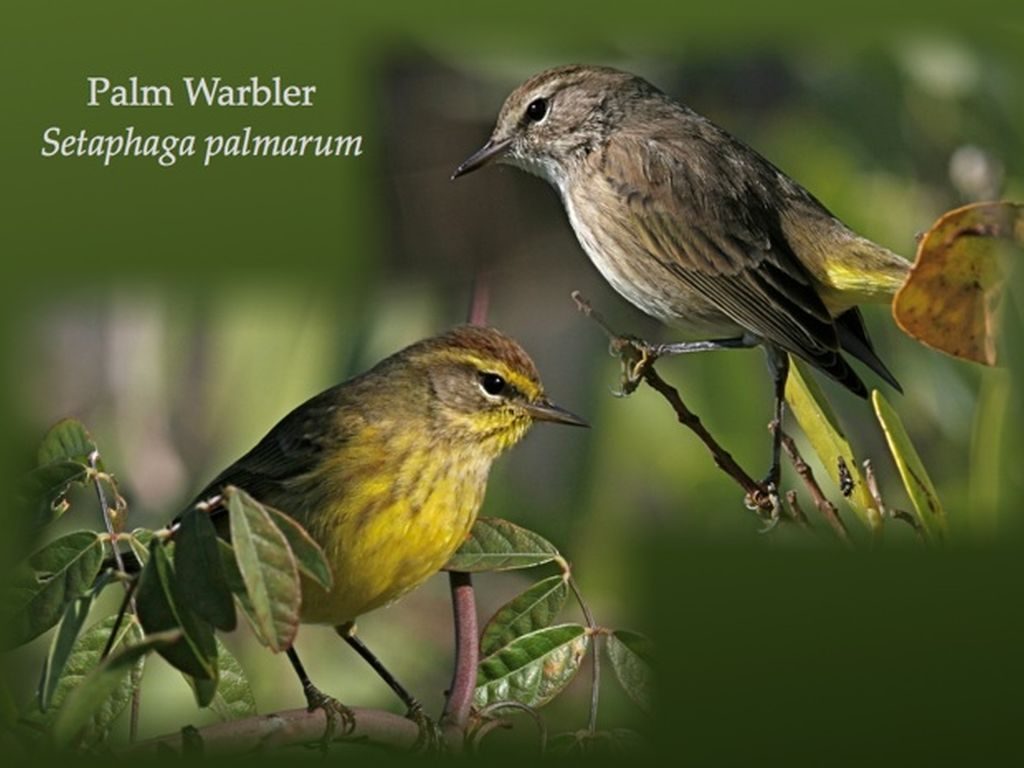
The Second Wave is the Biggest Week in American Birding at Magee Marsh and the biggest couple of weeks in Pittsburgh. Species include stragglers from the First Wave, too.
The Third Wave includes mourning warblers and the rarely-seen-in-Pittsburgh Connecticut warbler. If you want to see a Connecticut warbler at Magee Marsh, their peak is 20-27 May.
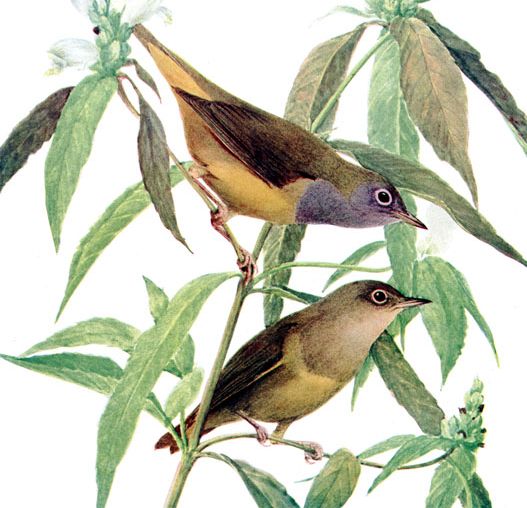
The Spring Migration Wave Theory explains why I’ve never seen some species in May in northwestern Ohio. I thought they didn’t come there but the real reason is that I wasn’t there when they passed through. I’ve always visited Magee Marsh in the second week of May so I’ve never seen a Louisiana waterthrush nor a Connecticut warbler while there.
This year I’m going a week earlier than usual; the BSBO website tells me what I’ll see. Find details on each warbler and its peak at Magee Marsh here (click on the species name to open the details).
Learn more about Spring Migration Wave Theory and the birds in each wave.
(credits are in the captions)
